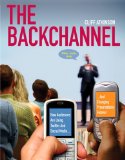A review by Web Teacher of Create Stunning HTML Email That Just Works (rating: stars) Create Stunning HTML Email That Just Works by Mathew Patterson is from Sitepoint (2010).
I have opted in to quite a few corporate emails. They all come to my inbox in HTML. Some are more effective than others. Some get me to click through. Some I delete without even opening. This slim book talks about how to create an effective HTML email that will get clicks and will be effective.
The chapters include
- Why Email?
- Planning an Email Campaign
- Design for the Inbox
- Coding Your Emails
- Understanding Permission
- Selling Email to Your Clients
The author, Mathew Patterson, works for Campaign Monitor, and he does draw from that background. He isn’t knocking you over the head with Campaign Monitor, however, and gives credit to other email campaign services like MailChimp. What he does represent is the idea of legitimate business email as opposed to spam. He talks about how to get permission from people to opt-in, how to let people unsubscribe with ease, and the legal requirements of email campaigns. He spends quite a few pages detailing the capabilities of various email applications and explains carefully what will and won’t work in most email clients.
I was most interested in what he had to say in the chapter on coding email. No surprise, that. If you learned to make a web page 10 or 12 years ago, you are in great shape to market yourself as an email designer. If you are learning HTML now, you aren’t learning the old school coding techniques needed for email. Some of the tools of the email coder:
- 600 pixel layout tables of one or two columns
- presentational attributes in the code for things like cellspacing, cellpadding, bgcolor, and borders
- inline styles for things like fonts and line-height
- reduce reliance on images
- always use alt text
- caption images
- store images permanently on your web server
- use
target="_blank"for links
In spite of the fact that some pundits have declaired email to be dead, it’s actually the most used protocol on the Internet. People who don’t do much of anything else on the Internet do use email. Companies and nonprofits rely on email for newsletters, announcements, calls to action, sales, and press releases. I think HTML email skills will be needed for a long time to come, and I think there is a niche market out there for people who can create well designed and effective email for a living.
This book opened up an educational can of worms for me. Do you think that an educational system should include the old school HTML techniques needed for effective email campaigns as a part of the curriculum? Should they be offered as a separate class or maybe a brief workshop, not a whole semester? Should the InterACT Curriculum include a module for HTML email?
Summary: A guide to the ethics and coding of HTML email.
Technorati Tags: Create Stunning HTML Email that Just Works, book reviews





